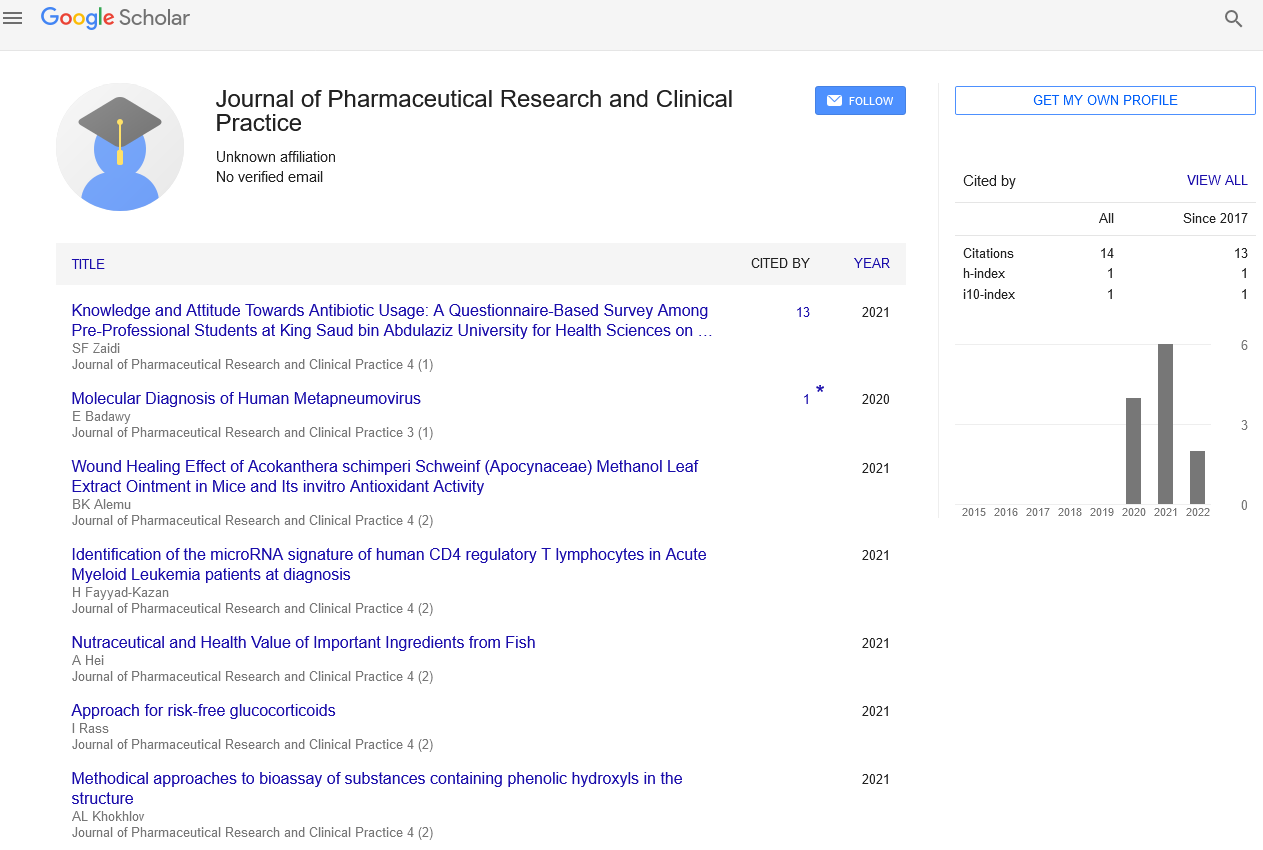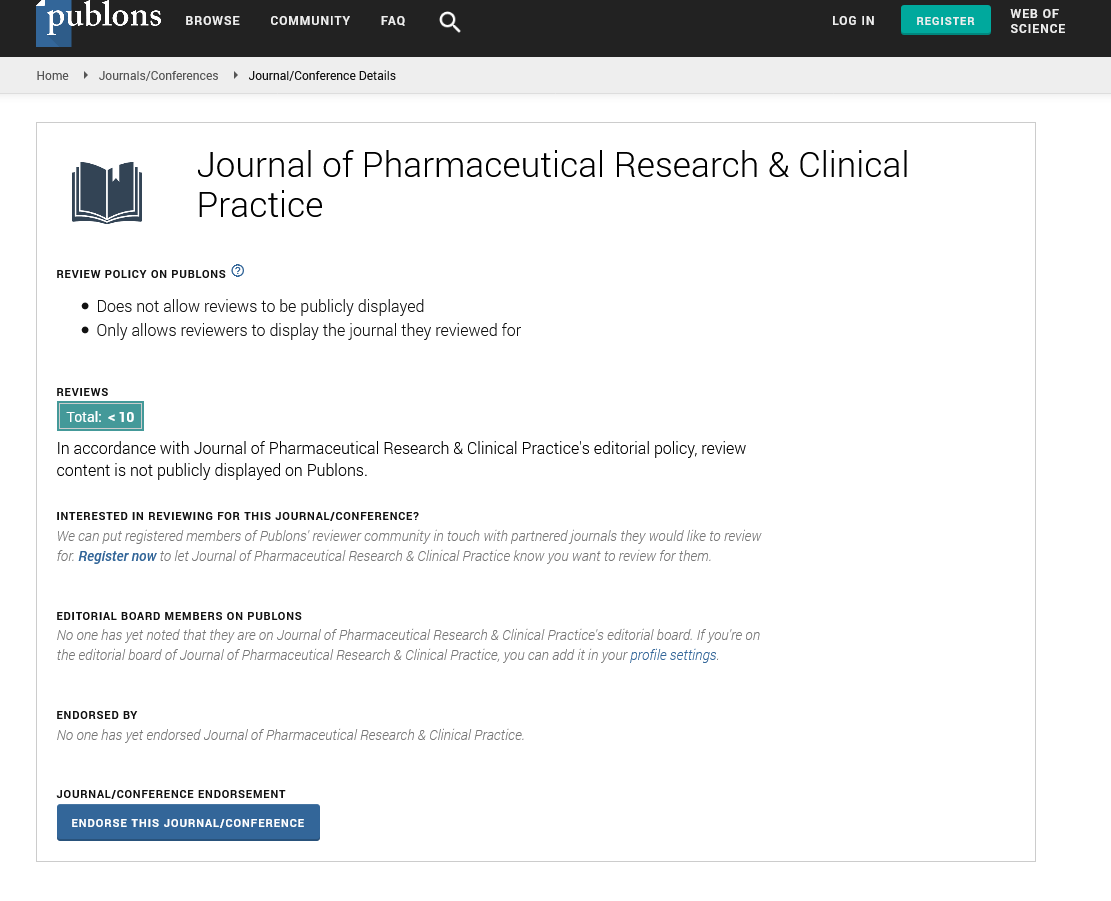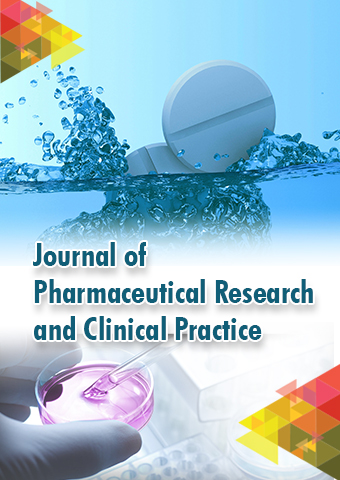Commentary - Journal of Pharmaceutical Research and Clinical Practice (2022) Volume 5, Issue 3
Parental cigarette smoking risk of congenital heart defects
Renata F Kuciene*
Institute of Cardiology, Medical Academy, Lithuanian University of Health Sciences, Lithuania
Received: 02-Jun-2022, Manuscript No. jprcp-22-42154; Editor assigned: 06-Jun-2022, PreQC No. jprcp-22-42154 (PQ); Reviewed: 20- Jun-2022, QC No. jprcp-22-42154; Revised: 23-Jun-2022, Manuscript No. jprcp-22-42154 (R); Published: 30-Jun-2022, DOI: 10.37532/ jprcp.2022.5(3).61-62
Abstract
Congenital heart defects are among the most common birth defects, and they remain a major cause of death in infancy and childhood (3). The prevalence of congenital heart defects is estimated to be 4 to 10 cases per 1000 live births, and the most frequent types of these malformations are septa defects. The part of ventricular and atrial septa defects closes spontaneously within the first year of life; other children with congenital defects require surgical intervention.
Keywords
case-control study • smoking; pregnancy • septa defects
Introduction
The etiology of most congenital heart anomalies is unknown. About 85% of these defects are caused by complex interaction between environmental teratogens and genetic factors. It is considered that the effects of harmful environmental factors on female organisms may cause the occurrence of birth defects, especially if they are affected during critical period, i.e., from three months before pregnancy through the end of the first trimester. Scientific studies have reported that maternal smoking during pregnancy is associated with an increased risk of congenital heart defects and septa defects. However, other studies have not found a significant association of maternal smoking with all septa defect. Relatively few studies have examined the relationship between congenital heart malformations and risk of parental smoking [1]. According to data of the validated registry in Kaunas city during 1995–1998, paternal and maternal smoking increased the risk of congenital heart defects, but the importance of a hazardous habit in the risk of septa defects in infants has not been evaluated. The objective of this study was to determine the association between parental cigarette smoking and risk of congenital heart septa defects in Kaunas infant population in 1995–2005.
Material and methods
We used the database of the Kaunas newborns’ register, containing information on newborn’s birth date, gender, health status, and mother’s residence. This database served as an initial source for the registration of congenital heart malformations. To register all the cases of congenital heart defects, diagnosed at delivery or later, we analyzed all available information from outpatient and inpatient settings of Kaunas city. Analysis was performed using the statistical package SPSS 13.0 for Windows. The distribution of selected risk factors of newborns’ health between cases and controls was assessed; crude and adjusted odds ratios (OR) along with 95% confidence intervals (CI) were calculated. A value of The Mantel-Haenszel technique was used to estimate the association between maternal smoking and septa defects in infants while controlling for educational level [2]. Multivariate logistic regression analysis was used to assess the relationship between parental smoking and congenital anomalies while controlling for possible confounders. The variables that were detected as statistically significant in the univariate analysis and considered as potential confounders were included into the multivariate models.
Results
According to the validated registry data, 371 newborns with congenital heart defects were born in Kaunas city during 1995–2005. The most common cardiac malformations were ventricular and atrial septa defects. They represented 70.3% of all registered cardiovascular malformations. There were 79 (21.3%) cases with ventricular septa defects (Q21.0), and 39 (10.5%) newborns had atrial septa defects (Q21.1). One hundred fortythree (38.5%) newborns had septa defects with other cardiovascular malformations; of the 143 cases, 27 (7.3%) had both Sociodemographic characteristics of case and control mothers are shown in Table 1. According to our data, the mean maternal age at delivery was similar for cases and controls (27.61±5.56 years and 27.35± 5.55 years, respectively). Being single/unmarried was associated with an increased risk of septa defects. The odds ratio for single mothers to deliver infants with septa defects was 1.76 (95% CI, 1.14–2.71. To assess association between septa defects in newborns and maternal smoking, analysis was performed [3]. According to our data, 29.2% of case mothers smoked before the pregnancy and 6.1% during the first trimester (Table 2). Maternal smoking before pregnancy increased the risk of septa defects in infants from 2 to 3 times depending on duration of smoking and number of cigarettes smoked per day. The risk to deliver a newborn with defects was more than twice higher among women who smoked during the first trimester (OR=2.36; 95% CI, 1.27–4.37.
Discussion
We performed an epidemiological casecontrol study to confirm the hypothesis that parental smoking is related to an increased risk of septa defects in newborns. We analyzed some environmental factors that may influence the risk of these anomalies and used logistic regression models to evaluate results. According to our data, parental smoking or at least smoking of one of the parents was one of the risk factors associated with birth defects. The data about respondents’ hazardous habits were subjective. Furthermore, in this study, information was collected mostly from mothers who could provide inaccurate information about intensity and duration of their and fathers’ smoking. Smoking is one of the most harmful factors to the reproductive system and fetal development. Scientists have showed that maternal smoking during pregnancy is associated with spontaneous abortions, placental complications, intrauterine growth retardation, preterm birth, perinatal mortality, sudden infant death syndrome, and congenital malformations [4]. According to results of our epidemiological study, maternal smoking increased the risk of septa defects. These results are partially consistent with findings of the study by Malik et al. We cannot easily compare our findings with previous studies as we did not analyze association between each subgroup of septa defects separately and maternal smoking. Similarly, there are differences in methodology, sample sizes, potential confounders, and misclassification of exposure.
Conclusion
The results of univariate and multivariate logistic regression analyses in this study showed a significant association between parental smoking, either maternal or paternal, and the risk of congenital heart septa defects in infants [5].
Acknowledgement
None
Conflict of Interest
No conflict of interest
References
- Botto LD, Correa A. Decreasing the burden of congenital heart anomalies: an epidemiologic evaluation of risk factors and survival. Prog Ped Cardiol;18:111-121(2003).
- Hoffman JI, Kaplan S. The incidence of congenital heart disease. J Am Coll Cardiol;39:1890-1900(2002).
- Boneva RS, Botto LD, Moore CA, Yang Q, Correa A, Erickson JD et al. Mortality associated with congenital heart defects in the United States: trends and racial disparities, 1979–1997. Circulation;103:2376-2381(2001).
- Cleves MA, Ghaffar S, Zhao W, Mosley BS, Hobbs CA et al. Firstyear survival of infants born with congenital heart defects in Arkansas a survival analysis using registry data. Birth Defects Res A Clin Mol Teratol;67:662-668(2003).
- Malik S, Cleves MA, Honein MA, Romitti PA, Botto LD, Yang S, et al. Maternal smoking and congenital heart defects. Pediatrics;121:810-816(2008).
Indexed at, Google Scholar, Crossref
Indexed at, Google Scholar, Crossref
Indexed at, Google Scholar, Crossref
Indexed at, Google Scholar, Crossref


